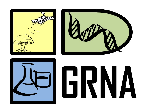Banca de QUALIFICAÇÃO: ROMULO SARMENTO BARBOSA
Uma banca de QUALIFICAÇÃO de MESTRADO foi cadastrada pelo programa.DISCENTE : ROMULO SARMENTO BARBOSA
DATA : 26/02/2021
HORA: 14:30
LOCAL: http://meet.google.com/zui-tsru-xgz
TÍTULO:
TOXINOLOGICAL CHARACTERIZATION AND PROTEOMIC ANALYSIS OF THE SCORPION PIECE Rhopalurus amazonicus LOURENÇO 1986 (Buthidae)
PALAVRAS-CHAVES:
Chromatography, Insecticidal peptides, Gryllus assimilis, Alter do Chão.
PÁGINAS: 27
GRANDE ÁREA: Outra
ÁREA: Ciências Ambientais
RESUMO:
Scorpions are among the first arthropods to leave the aquatic system and occupy the terrestrial system, these animals have a flattened dorsoventral morphology and have venomproducing glands at the end of their tail, with toxins with antibacterial, antifungal and anticancer effects, also affecting viruses, mammals and insects. Insecticidal peptides isolated from scorpions have been targeted since 1990 as a potential substitute for synthetic insecticides. However, the vast majority of them have been purified from scorpions from the old world, with a few publications with scorpions from the new world, and only two species found in Brazil, Tityus serrulatus and Tityus bahiensis, and one species distributed in Mexico. The present work aims to isolate at least one insecticidal peptide from the venom of the scorpion Rhopalurus amazonicus LOURENÇO 1986 (Buthidae), which is found in the Alter do Chão region, according to the author who describes it. After collecting R. amazonicus scorpions, the venom will be obtained by electrostimulation and its protein concentration determined. Through the ultrafiltration technique, combined with chromatographic ion exchange and HPLC techniques, a peptide with insecticidal activity will be purified. The biological activity will be carried out by injecting the fractions and / or pure peptide into crickets Gryllus assimilis. The structural characterization of the peptide and venom will be carried out through the proteomic approach, with the determination of the molecular mass, amino acid sequence and bioinformatics analysis compared to the database. Preliminary results obtained showed that the venom has protein compounds of high molecular weight and a large amount of protein compounds of low molecular weight, where the peptides are more abundant. The initial fractionation of these peptides showed that only the cationic peptides were lethal after 15 minutes of injection into the crickets. These results indicate the existence of insecticidal peptides in the R. amazonicus venom. Thus, it is intended to isolate a peptide with insecticidal activity from cationic peptides, and proceed to its biological and biochemical characterization. Such results will contribute to expand the scarce knowledge of the species and also make possible future exploration towards the development of new biopesticides from scorpion venoms.
MEMBROS DA BANCA:
Interno - 1963026 - ANDERSON ALVARENGA DE MOURA MENESES
Presidente - 1684515 - JOACIR STOLARZ DE OLIVEIRA
Externo à Instituição - JUAREZ DE SOUZA - UEPA




